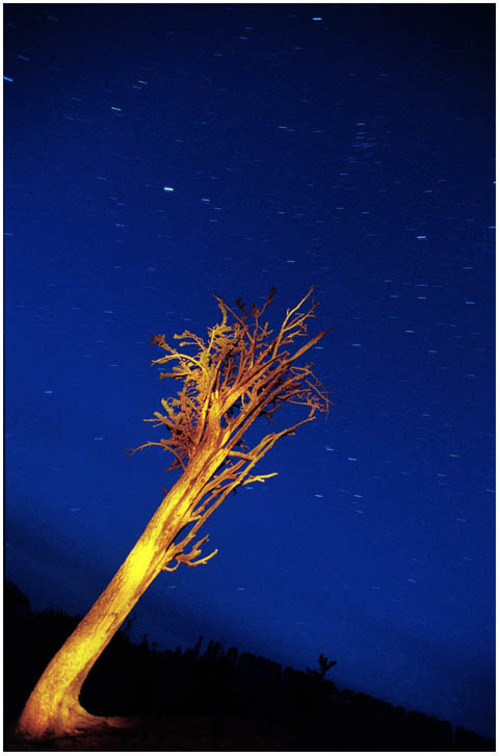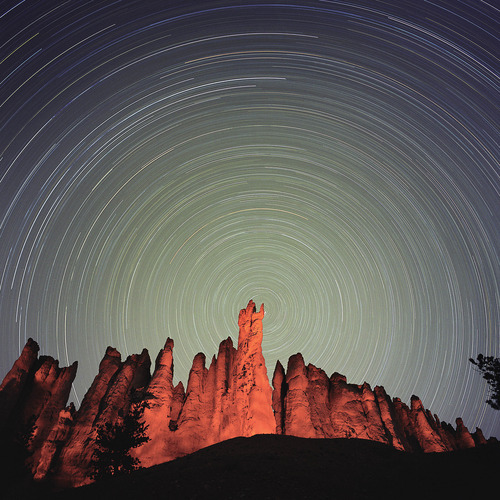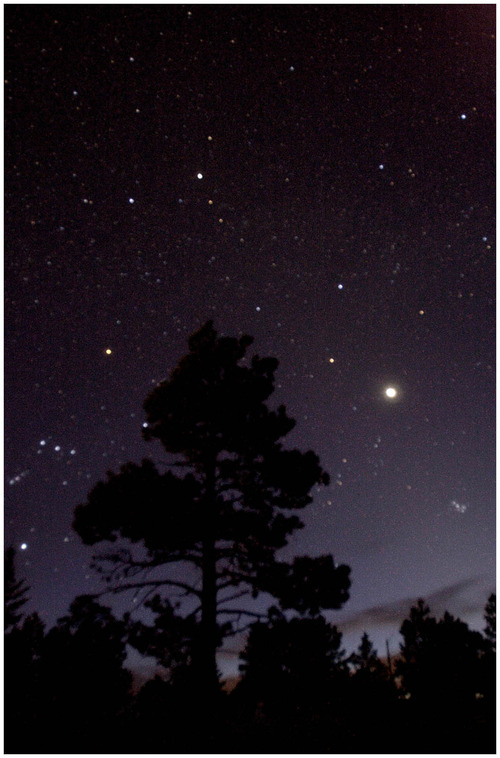This is an archived article that was published on sltrib.com in 2012, and information in the article may be outdated. It is provided only for personal research purposes and may not be reprinted.
The mysterious wonders of the hoodoos and other Bryce Canyon National Park landforms are rightfully the first focus of attention for visitors to the southern Utah destination.
But not all the wonders of Bryce Canyon disappear when the sun sets. In fact, millions wait for dark to reveal themselves.
Bryce Canyon's high elevation, arid environment and distance from major cities make the national park one of the best spots on Earth to view the stars, planets and constellations of the universe.
"Something like 60 percent of the people in the United States have never seen the Milky Way. They don't even have an idea it exists because they can't see it from where they live," said Don Colton, a Salt Lake Astronomical Society member who helps plan the annual Bryce Canyon Astronomy Festival. "The dark skies of Bryce give them a chance to see how it got its name."
The 12th annual festival will be Thursday through Sunday at Bryce. This year's event was scheduled to include the May 20 "ring of fire" solar eclipse. Officials expect more than 7,000 people to visit Bryce solely to witness the eclipse.
It's unclear whether night-sky programs like those offered at Bryce and other national and state parks across the country created the surge of interest in astronomy or if the agencies were reacting to public curiosity that already existed.
Either way, Bryce is the star of the show.
Visitors have unofficially soaked in the star scene at Bryce for centuries, but the National Park Service gave them some help in 1969, when chief of interpretation Don Fellows started astronomy programs at the park. The Bryce programs are believed to be the longest-active astronomy offerings in the entire National Park Service.
By 2006, Bryce officials figured more than 27,000 visitors participated in astronomy programs at the park.
The vaunted NPS Night Sky Team was stationed at Bryce from 2004 to 2008. The team, according to the Bryce website, "works with numerous parks to measure and evaluate the effects of light pollution and educates park visitors and surrounding communities about the actions individuals can take to protect and reclaim the night sky."
People from across the world have attended the "Dark Wars" and "Scared of the Dark?" presentations by "Dark" Ranger Kevin Poe.
But Utahns close to the park also take advantage of the brilliant night skies at Bryce.
Numerous volunteers augment the efforts of the team of rangers dedicated to the stargazing programs throughout the years at Bryce.
Sara Funk, a student at Parowan High School, roughly 75 miles from the national park, became interested when her grandmother volunteered for the Bryce Canyon Astronomy Festival. Her grandma moved, but Funk remains a fan of astronomy at Bryce.
"I love looking at and learning about the stars and our universe," Funk said. "It's also good to get people aware of the pollution that is going to the night sky. With all the light we use at night, and with so much of it going to outer space where it isn't needed, many people are missing a real treat."
Utah State Parks rangers also regularly offer stargazing programs at Antelope Island, Dead Horse Point, East Canyon, Goblin Valley, Snow Canyon and Wasatch Mountain.
The first stargazing events at Dead Horse Point State Park near Moab were not arranged by the staff at the park.
"We had people who let us know they were coming and asked if they could set up telescopes," recalled Rock Smith, who worked at Dead Horse from 1985 to 2001. "It sounded pretty interesting, so we went to check them out."
Like Bryce, Dead Horse Point's high elevation and arid environment make for good night-sky viewing opportunities. The park now offers a monthly "Under a Blanket of Stars" program.
The success of Bryce's programs has led park officials to consider building a venue specifically for the astronomy presentations.
Officials have identified three possible locations for something in the order of a partially covered 600-seat amphitheater, Poe said.
The largest obstacle for the new stargazing facility in these days of tight budgets will be securing money from within the park or from outside sources to make it happen.
Astronomy festival
P The 12th annual Bryce Canyon Astronomy Festival will be held Thursday through Sunday and will include a viewing of the solar eclipse on May 20 at Bryce Point in Bryce Canyon National Park. Lodging within 75 miles of Bryce Canyon National Park is booked, so plan accordingly. Visit http://www.nps.gov/brca/planyourvisit/astrofest.htm for more information.









